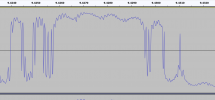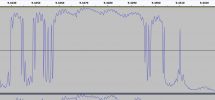Hey there so I have a question regarding sampling off streaming services for making music.
I’m using qobuz 16/44 only tracks
Now if I want to record these at -6dbfs peaks I have to lower either the qobuz app or windows Master volume to avoid clipping and especially to get -6dbfs peaks. Mostly to 50-60% volume. From what I grasp digital volume reduction reduces bit depth and I’m wondering if it really matters because most of the time the samples would be mixed lower at -10dbfs or so but sometimes boosted a bit and I don’t want the noise floor or other artifacts to become and issue later.
For context it’s drum breaks for old boom bap style hip hop so fidelity isn’t super important but I’d still like to avoid messing the audio up more than I need to.
Here’s some options I thought of and would like to know which would be the preferred option ( in theory) all recorded with loopback in audacity
Record the 16/44 source with the volume reduced to reach -6dbfs peaks and deal with the “bit loss” and noise etc ( if it even becomes a problem with the above in mind)
Record the 16/44 source with volume lowered just enough to not clip minimizing the changes to the source and worry about gain reduction /boosting later in the DAW when mixing (since there won’t be as much of a change as the first option this may be better)
Record the 16/44 source at 24/44 with volume lowered enough to peak at -6dbfs (would those extra bits help?)
Record at 16/44 with volume lowered just enough to avoid clipping and use the “amplify” option in audacity with a negative gain value to set the peaks at -6dbfs
Sorry if this is long winded just want to get it right before I do a ton of sampling and have to do it over lol.
I’m using qobuz 16/44 only tracks
Now if I want to record these at -6dbfs peaks I have to lower either the qobuz app or windows Master volume to avoid clipping and especially to get -6dbfs peaks. Mostly to 50-60% volume. From what I grasp digital volume reduction reduces bit depth and I’m wondering if it really matters because most of the time the samples would be mixed lower at -10dbfs or so but sometimes boosted a bit and I don’t want the noise floor or other artifacts to become and issue later.
For context it’s drum breaks for old boom bap style hip hop so fidelity isn’t super important but I’d still like to avoid messing the audio up more than I need to.
Here’s some options I thought of and would like to know which would be the preferred option ( in theory) all recorded with loopback in audacity
Record the 16/44 source with the volume reduced to reach -6dbfs peaks and deal with the “bit loss” and noise etc ( if it even becomes a problem with the above in mind)
Record the 16/44 source with volume lowered just enough to not clip minimizing the changes to the source and worry about gain reduction /boosting later in the DAW when mixing (since there won’t be as much of a change as the first option this may be better)
Record the 16/44 source at 24/44 with volume lowered enough to peak at -6dbfs (would those extra bits help?)
Record at 16/44 with volume lowered just enough to avoid clipping and use the “amplify” option in audacity with a negative gain value to set the peaks at -6dbfs
Sorry if this is long winded just want to get it right before I do a ton of sampling and have to do it over lol.


